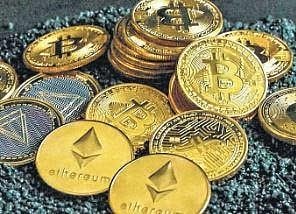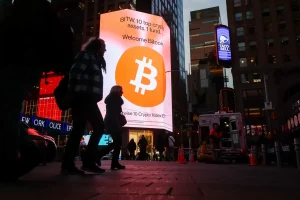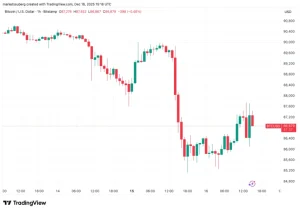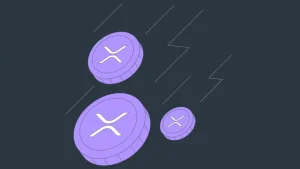Crypto Rivalry Heats Up: Solana Dismisses Comparisons with Ripple and XRP as Litecoin Fires Back

A fresh wave of rivalry has swept through the cryptocurrency sector as Solana sparked controversy by declaring that Ripple’s XRP and Litecoin do not operate “on its level.” The bold claim has reignited long-standing debates within the crypto community about scalability, innovation, and real-world utility among leading blockchain networks. While Solana positions itself as a high-performance platform focused on speed and scalability, both Ripple and Litecoin have responded by highlighting their established ecosystems and proven financial use cases. The clash underscores the competitive nature of the crypto industry as major players jostle for dominance in an evolving digital economy.
Solana’s Bold Assertion of Superiority
Solana, known for its lightning-fast transaction speeds and expanding decentralized application ecosystem, recently made a pointed statement implying that its technological infrastructure places it above older cryptocurrencies like XRP and Litecoin. The comment has been widely interpreted as a challenge to legacy digital assets that were once at the forefront of blockchain innovation.
According to Solana’s proponents, the network’s architecture—capable of processing thousands of transactions per second—offers a more scalable and energy-efficient framework compared to traditional proof-of-work and centralized ledger systems. The blockchain’s rapid growth in decentralized finance (DeFi), gaming, and non-fungible token (NFT) applications has further fueled its confidence in claiming technological leadership.
However, industry observers note that while Solana’s innovation is impressive, its network has faced intermittent outages and scalability challenges. This has prompted skepticism among critics who question whether speed alone can define superiority in a rapidly maturing sector.
Ripple’s Response: Utility Over Hype
Ripple’s XRP community swiftly countered Solana’s claim, emphasizing the platform’s focus on real-world financial utility rather than speculative hype. Ripple’s payment network has become synonymous with efficient cross-border transactions, offering an established framework for institutional adoption across global banking and remittance corridors.
Supporters argue that Ripple’s approach prioritizes compliance, regulatory integration, and financial infrastructure—areas where many newer blockchains have yet to prove themselves. They contend that XRP’s role as a bridge asset for liquidity management and real-time settlement remains a unique and tangible value proposition, particularly in markets where blockchain adoption is moving from experimentation to implementation.
Moreover, XRP’s recent resurgence in market activity, driven by regulatory clarity and renewed institutional interest, underscores its enduring relevance despite changing technological trends.
Litecoin Enters the Fray
Litecoin, often dubbed the “silver to Bitcoin’s gold,” also weighed in following Solana’s remark. Known for its stability, transaction efficiency, and reliability, Litecoin’s developers and supporters defended the project’s longevity and consistent performance in a volatile crypto landscape.
While Litecoin has not pursued aggressive branding or radical technological shifts, it continues to maintain a loyal community and a robust track record of network uptime. Advocates argue that Litecoin’s resilience and adaptability—particularly in payment processing and peer-to-peer transactions—demonstrate its continued importance as a practical and trusted digital currency.
In response to Solana’s assertion, several Litecoin community members highlighted that innovation should not come at the expense of security and consistency, hinting at Solana’s past technical disruptions.
A Reflection of Broader Market Dynamics
This verbal sparring among major blockchain networks reflects the broader evolution of the cryptocurrency industry. Once dominated by ideological alignment and collaborative innovation, the space has now matured into a competitive market driven by technological differentiation, institutional adoption, and market capitalization.
Solana’s rapid ascent in decentralized finance contrasts sharply with Ripple’s institutional orientation and Litecoin’s role as a transactional currency. Each project represents a distinct vision for blockchain’s future: Solana embodies performance and scalability; Ripple stands for financial interoperability; and Litecoin symbolizes accessibility and dependability.
This diversity, while fueling rivalry, also drives the sector’s overall advancement. Competition among leading projects pushes developers to innovate and strengthens the case for blockchain integration across industries.
The Future of Blockchain Rivalries
As the crypto industry enters its next phase of evolution, such rivalries are likely to intensify. The coming year may see greater convergence between blockchain networks and traditional finance, where interoperability, compliance, and real-world efficiency will determine long-term success.
For now, Solana’s declaration has sparked necessary debate about what truly defines progress in the digital asset world—speed and innovation, or stability and proven use cases. Each of these networks continues to evolve, shaping a multi-dimensional market that thrives on competition as much as collaboration.
Conclusion
Solana’s dismissal of Ripple and Litecoin has reignited a lively discourse on technological innovation and utility within the cryptocurrency sector. While Solana boasts cutting-edge performance and scalability, Ripple and Litecoin remain grounded in practical applications and network reliability. Ultimately, the race for dominance in the digital finance ecosystem will not hinge on one metric alone but on the ability of each network to balance innovation, security, and sustainability.
The rivalry serves as a reminder that in the decentralized world of blockchain, success is not just about who moves fastest—but who endures longest.




